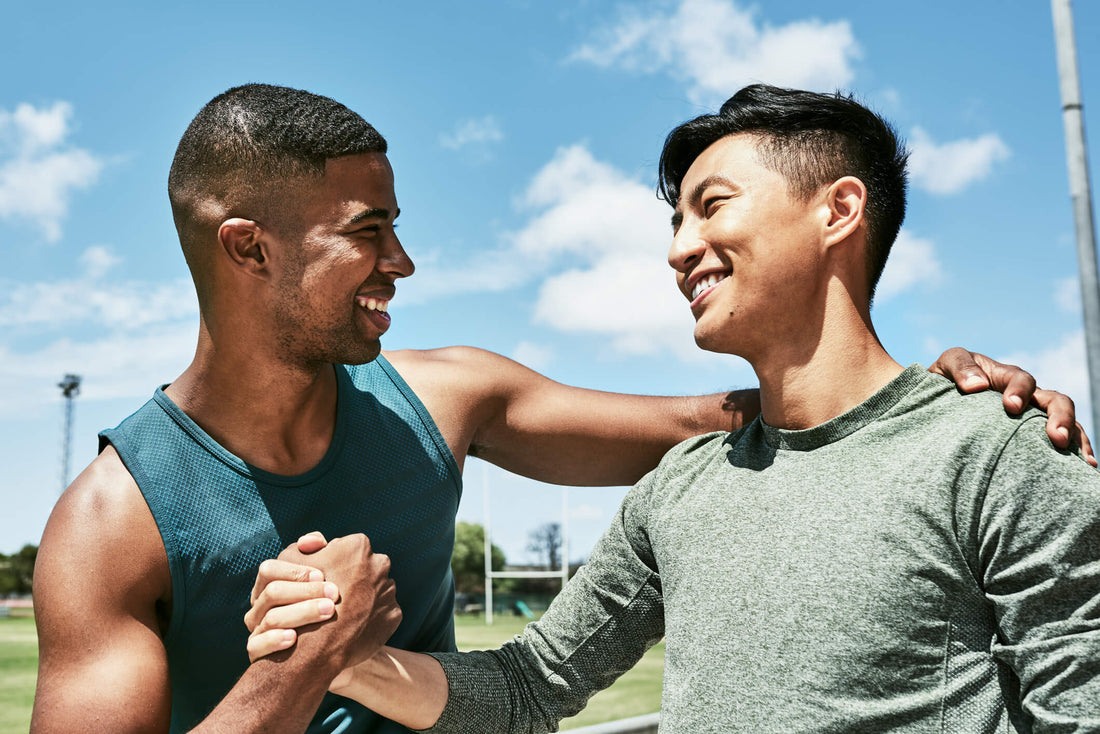
Research: Can Your Friends Influence Your Pain Tolerance?
As Physiotherapists, we often focus on the physical aspects of pain - the injured tissue, the inflamed joint, the tight muscle. But pain is a complex experience shaped by a myriad of factors, including our psychology and social environment.
Interestingly, research suggests a surprising social factor might have a surprising influence on your pain tolerance: the pain tolerance of your friends.
A fascinating 2018 study published in the journal Scandinavian Journal of Pain revealed that individuals tend to have a similar level of pain tolerance to their close friends. This correlation provides a compelling window into the social dimensions of pain, a concept every patient and clinician should understand.
What the Study Uncovered: Friendship and Pain Thresholds
Researchers from the University of Oxford investigated the pain perceptions of a large group of adults. The methodology was straightforward but powerful:
- Participants: Over 1,000 individuals, including pairs of close friends.
- Pain Test: Participants were asked to complete a cold-water immersion task, keeping their hand in cold water for as long as they could tolerate.
- Analysis: Scientists then compared the pain tolerance times between friends and between random acquaintances.
The results were striking. The study found a clear positive correlation in pain tolerance between friends. In simpler terms, if your friend has a high pain tolerance, you are more likely to have one as well, and vice versa. It's important to note that this correlation was specifically identified among male participants.
Why Would Friends Have Similar Pain Tolerance?
This finding points to deep-seated psychological and neurobiological mechanisms. The researchers proposed two main theories:
- Social Bonding & Endogenous Opioids: The leading theory involves our body's internal chemistry. Positive social interactions and the maintenance of close friendships are known to trigger the release of endogenous opioids - the brain's natural painkillers, like endorphins. It's possible that friends, through their shared positive experiences, develop a similar baseline in this internal pain-relief system. You can think of it as a shared "chemical landscape" for managing discomfort and stress.
- Learned Behavior & Social Modeling: From a young age, we learn how to respond to pain by observing others. Friends may unconsciously adopt each other's coping strategies, stoicism, or reactivity to painful stimuli. If your friend tends to "soldier on" through discomfort, you might be more inclined to do the same, effectively recalibrating your own pain response.
A Physiotherapist's Perspective: What This Means for Your Recovery
While this study doesn't mean your friend's pain tolerance dictates your own, it highlights a crucial aspect of pain management often overlooked in the clinic: the social context.
Pain is not just a signal from a damaged tissue; it is a personal, subjective experience constructed by your brain. This research suggests that our social circles can influence that construction. For a Physiotherapist, this reinforces the importance of a biopsychosocial approach to treatment - one that addresses not just the biology of an injury, but also the psychological and social factors that modulate pain.
In practical terms, this could mean:
- Considering the patient's support system when designing a rehabilitation plan.
- Understanding that pain behaviours can be influenced by family and friends.
- Encouraging group-based therapy or finding a "rehab buddy" to foster a positive, resilient environment for recovery.
Important Limitations and Context
To interpret these findings correctly, it's essential to consider the study's limitations, which the researchers openly acknowledged.
- Correlation, Not Causation: This is the most critical limitation. The study shows a link but does not prove that friendship *causes* similar pain tolerance. It could be that people with naturally similar pain thresholds are more likely to become friends (a concept known as homophily).
- Gender-Specific Finding: A significant correlation was found specifically in male friendships. The same pattern was not conclusively established in female friendships or mixed-gender pairs, meaning these results are not universally generalisable.
- One Type of Pain: The study used only a cold-pressor task to measure pain. Pain tolerance can vary significantly across different types of pain (e.g., mechanical, thermal, chronic), so these findings may not translate directly to all pain experiences, like chronic lower back pain or osteoarthritis.
The Bottom Line for Your Pain Journey
This research opens up an exciting conversation about the invisible social forces that shape our experience of pain. It suggests that healing and recovery are not purely solitary journeys. The company we keep—our friends, family, and support networks—may play a subtle but meaningful role in how we cope with and perceive discomfort.
As you work through your own Physiotherapy goals, consider your social environment. Are your supporters helping you build resilience? Sharing your challenges with a friend, or even participating in a group rehabilitation class, might do more than just pass the time—it might actively help recalibrate your brain's response to pain.
Have you ever noticed how your own pain tolerance seems to be influenced by those around you? Share your experiences in the comments below.
Need Personalised Guidance?
If you'd like help trying to uncover the underlying cause of your pain or dysfunction, consider booking an online Telehealth consultation with Grant here!

